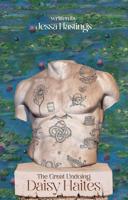Publisher's Synopsis
Existing textbooks and relevant monographs in the subjects of anthropology and history have presented incomplete and sometimes misleading descriptions of how mankind has advanced from the hunter-gatherer society to more complicated cultures. For example, historians have suggested that fertile land and other favorable environmental (geographic) factors have helped Sumerians/Egyptians make a creative leap to the early civilizations along river valleys. However, this is not the real story about civilizations, and more critical geographic factors (or conditions) incentivizing humans to develop various civilizations have not been presented. Still, anthropologists and historians have highly simplified, if not dismissed, some key biological factors that may have decisively influenced the dynamic behaviors of mankind. In this book a few of common ancestral terms are resurrected to help understand the complicated process of human and cultural evolutions throughout the world. What is quite interesting is that all of them are derived from the multilingual word or syllable 'wa, ' while the latter is originally associated with the crying of - and certainly was selected as the common ancestral word with the meanings of "house, home, homeland, motherland, and so on" by - early humans living in different parts of the world. I will then delve into factors and mechanisms that may have influenced the dynamic behaviors of six earliest civilizations -Sumerian, ancient Egyptian, Harappan (Indus), Chinese, Mesoamerican, and Andean South American. My narratives and theoretical and statistical analyses are focused on both environmental (geographic) factors on which traditional historic analyses are based and human (behavioral) factors on which anthropological analyses are usually based. This book provides many neglected but still crucial environmental and biological clues about the rise and fall of civilizations - ones that have largely resulted from mankind's long-lasting "Win-Stay Lose-Shift" games throughout the world. The narratives and findings presented at this book are unexpected but reasonable - all of which are what every student of anthropology or history needs to know and doesn't get in the usual text.























